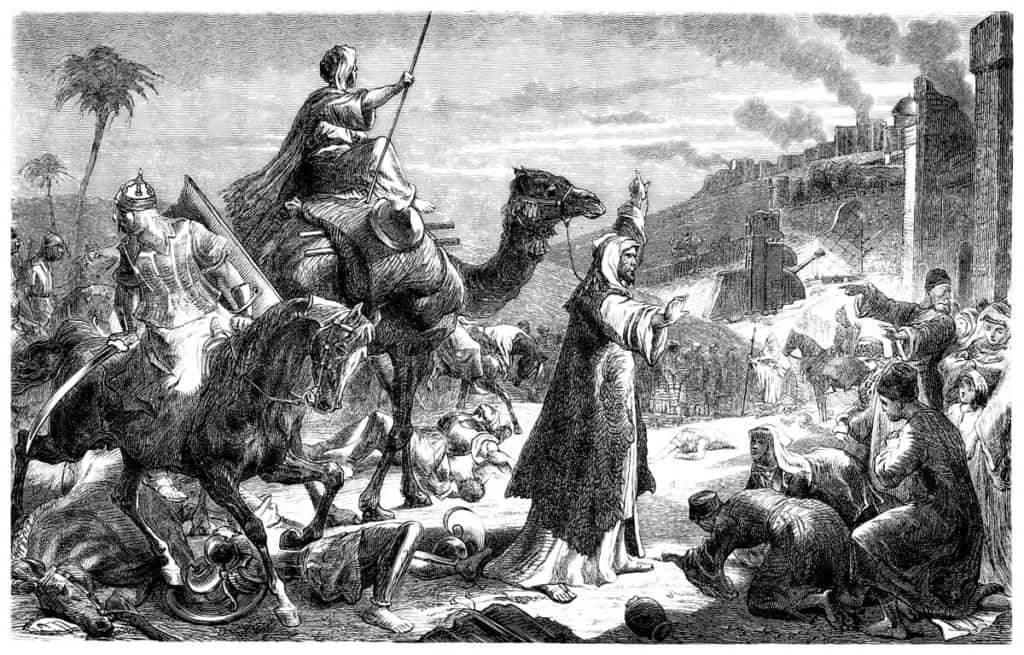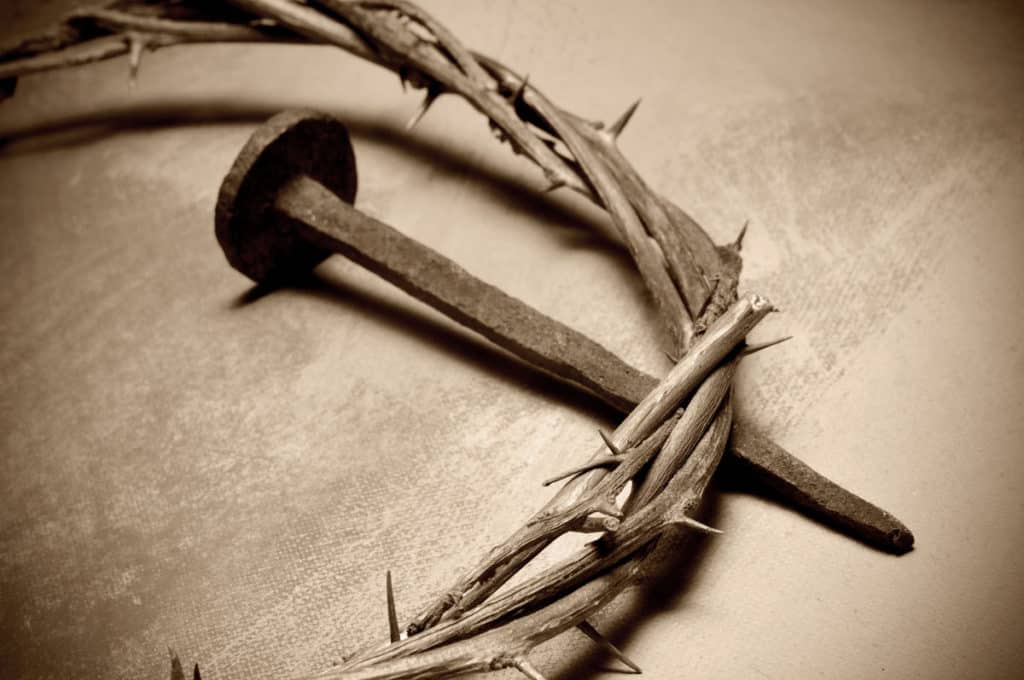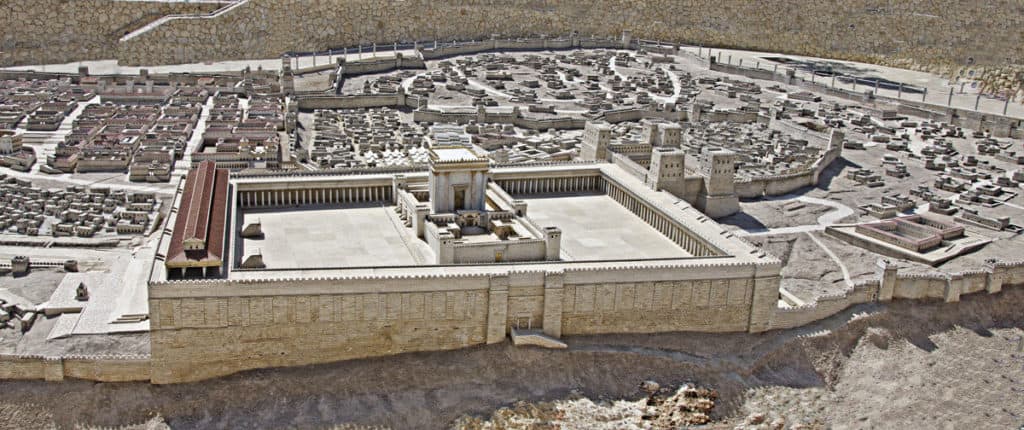I remember when it was very confusing to me knowing which religion could have the fullness of the truth. There were countless contradictory opinions.
I discovered a way that narrows the choices from a billion opinions to a couple. It requires proof. If something was the truth, then I would expect to see it last throughout history, not as a new man-made idea at a specific date by a specific person. If the idea lasted from ancient times through today that would garner more serious attention. We will follow that proof here…
Marx and Freud Flawed

Karl Marx once said religion is the Opium of the people, that society just made up religion to control people. Sigmund Freud thought religion was made up by people’s minds as an illusion.
One thing I find obviously missing in their arguments is some simple logic and reasoning. As religion is a set of beliefs, with Marx & Freud stating new beliefs, then their ideas could also be considered controlling and delusional. Mark and Freud failed to apply their own philosophy to their own ideas.
Either Marc and Freud were ignorant about simple logic or they knew it and saw how easy it was to fool large populations. The very thing they claimed to despise about religion was what they were creating themselves, They were trying to create a new set of beliefs according to their own world views, without God. They were, in essence, a religion, but disguised as another name.
- There is no such thing as a group without beliefs

If we try to apply Marx and Freud’s philosophy’s to a logical conclusion, everyone could be delusional. If there is no way to tell who is and who isn’t, we can’t even trust their philosophy as a starting point, so their idea falls apart, disproving itself.
- We end up with what I call ‘The Billion to 1 Principle’.
The Billion to 1 Principle
When we get to the point of everyone deciding for themselves we reach the Billion to 1 Principle., everyone having their own opinion and no way to know any truth. This leaves people confused. How can someone choose a religion let alone find some truth? If all we have is opinion we get nowhere to find out what is right and wrong.
How Can This Help Us Choose a Religion?
When we look at various religions, if we spot a concept that leads us to an unlimited number of contradictory choices, that is a good indication that it is not truthful, but leads to confusion. We can test this with some history.
If someone today wants to start their own church, they can go to any number of schools, get a certification, start a church on the corner and attract some followers. We all know churches like these and may have even been part of one ourselves.

- This pastor or preacher who started their own church may be the best person you know, with the biggest heart They may love God and be a good citizen, but unfortunately there is a problem.
- The problem is that anyone in the world can start their own church with their own beliefs and their own rules. It leads to a million choices. The moment someone joins 1 church, 100 others spring up, all claiming to be the true church.
Which of these has the universal truth? We don’t know. There is no way to prevent false teachers. It is almost impossible to tell which one is authentic. We need some kind of guideline to reduce the choices reasonably.
- Any new church that was started by a person can’t be the one true church. Any false teacher can start a new church and claim they are the true authority.
Let’s see if this guideline helps. As we mentioned, we can use history to test it.
Back 100 Years – Pop-Up Churches
We’ll go back for 100 years. If a church has the eternal truth, we would expect it to last at least 100 years. What we see is astonishing, many of the modern overnight pop-up churches are gone within a decade, almost all within 100 years.
They were man-made. They didn’t last. While some of them may have taught parts of the truth or been good people with good intentions, we are looking for a truth that doesn’t fade away.
Looking for historical proof, within 100 years, Our choices have been reduced from a Billion to a few thousand.
Warning: If you go further, you may not like the end result, but the truth doesn’t change because of opinion.
Back 200 Years – Jehovah Witness and Mormons

Jehovah Witnesses
Jehovah’s Witnesses were found around the year 1870 by Charles Taze Russell who was influenced by the earlier Adventists. They are best known for predicting the end of the world several times with specific dates, but it didn’t happen.
Adventists
William Miller started the Adventist movement in the 1830s. He predicted the end of the world in 1844 and it didn’t occur. Several branches after including the Jehovah’s Witnesses borrowed the idea.
Mormons
Mormons were founded by Joseph Smith around 1820. Best known for polygamy and a different concept of the Trinity than mainstay Christians. Joseph Smith claimed to be the one true prophet chosen by Jesus to restore the Church.
This claim to be the one true church is similar to all the modern pop-up churches. Anyone can claim it whether crazy, greedy, or even with good intention. If we accept this idea though, we end up back at a million opinions, not a way to find the truth.
Going back in time, by 1800 none of these churches existed so we are leaving them off our list.
Back to 1500 – Protestants

We are jumping back quickly now. All the modern pop-up churches all gone, so are Mormons, Jehovah’s Witnesses, and Adventists.
If we go back to the year 1500, all the Protestant churches are gone too. Why is that?
- Protestant means they were protesting. Unfortunately in Protesting and choosing to start their own individual churches, they opened themselves up to the next group who did the same to them. It led to an endless splintering of churches with differing teachings.
- History shows us 30,000 Christian churches (if you count all the modern pop-ups) and several dozens of larger denominations.
- Each Protestant church was making the same claim, to reform the one before it, often with new ideas from an individual leader.
- The Protestant principle leads to fragmentation which is different than what Jesus did in founding One Church and promised the gates of the netherworld would never prevail against it.
Again I’ll repeat not to judge many people in these churches who are holy and devout, but because they started 1500 years after Jesus, each with a differing set of teachings. and a Protesting principle that leads to splintering, it doesn’t get us to a consistent truth.
If there is another Christian church that goes all the way from Jesus to today, that would be better.
Back to 1440s – The Printing Press

As we stop at the printing press we notice something that confirms our previous observation. There were no Bibles available in mass printings for the common person before this time. A hand-copied Bible would have cost a fortune.
It isn’t a coincidence that the new idea of the 1500s, Sola Scriptura, (only needing a Bible as authority) came after Bibles could be mass-produced by the printing press. This new idea by Luther and other Protestant founders, allowed them to convince enough people to split away from the Catholic Church.
If we look at the early 1400s, the idea of Sola Scriptura and Protestant churches do not exist. The printing press confirms our historical approach can reveal man-made ideas.
We are now down to a handful of religions so let’s name them in no particular order…
- Eastern Orthodox
- Coptic/Armenia
- Islam
- Catholicism
- Hinduism
- Buddism
- Jainism
- Judaism
Back to 1000 A.D. – Eastern Orthodox

Of the remaining Christian churches, we only have 3, which we will separate into three groups, the Eastern Orthodox, the Catholics, and the Coptic.
As far as I know, each of these can provide a historical list of Apostolic (Bishop) succession going from today all the way back to the Apostles of Jesus, with consistency on key beliefs. That is good evidence they come from Jesus.
Let’s see if we can find a reason to reduce our search to one or another.
Most of the teachings are the same, but if we stick to our historical requirements we see a difference. In the case of the Orthodox, their Patriarch in Constantinople currently has the title ‘First Among Equals’ to try and keep unity among the Orthodox.
However, the problem is that prior to 1054 A.D. the title of ‘First Among Equals’ was not the Bishop of Constantinople, but the Bishop of Rome, which goes back to Peter, the Apostle that Jesus called gave the keys to the kingdom, asked to tend his sheep, and gave the power to bind and loose.
The Catholics consistently kept this unity with the Bishop of Rome so they get the nod over the Orthodox.
Note: Some orthodox and eastern churches have re-joined the Bishop of Rome. Unification for others is not far away. In hopes for reunion, one of the Popes referred to the two as the left and right lungs of the Church.
Back to 600 A.D. – Islam

Mohammed claimed to have a vision directly from God. Unfortunately, we have heard this over and over in our travels to this point. If none of the other Christian churches could be the one provable religion using this kind of claim, we leave out Islam for the same reason.
If Mohammed was able to give a proof of his ancestry back to Abraham and had chosen to avoid dogmatic statements about Jesus, then perhaps there would be more to keep Islam in this historical conversation.
But the difficulty is that Mohammed’s ideas about Jesus don’t agree with other historical references. See (Was Jesus a Real Person?)
Simply put, we have Romans, Jewish, and Christian sources from Israel all agreeing that Jesus was crucified. Someone from another country, 600 years later, would not have the authority to change history. It is more likely that Mohammed encountered distorted ideas about Jesus through heretical groups like the Nestorians and was not aware his perception was off.
As good as many Muslims may be, Islam has some basic inconsistencies about Jesus and rests on the claim of one person’s vision, neither passing our historical test so that we need to continue to look elsewhere.
Back to 300 A.D. – Coptic Churches
As we go back earlier, we have some Coptic, Armenian, and other smaller Christian groups who may have kept a record of their succession from Jesus to today. That is good evidence, but they also suffer from the same issue as the Orthodox. They lost the concept of how to retain unity in the Bishop of Rome.
Back to A.D. 33 – Jesus

Of 30,000 Christian denominations, the one remaining is the Catholics. They have a record of succession from today all the way back to Jesus and they preserved the Bishop of Rome. They are still passing our historical tests.
Jesus Himself
Someone could argue that Jesus is like all the other men we have passed, claiming to have a vision of God. If Jesus is merely a person, then that would be true. The critical difference is that Jesus claimed to be God. If he is the Messiah, then he has legitimate claims going back into the Old Testament. The New Testament writers provide genealogies connecting Jesus to the tribe of Judah so Jesus is not ruled out yet.
Judaism
We’ll make a small note about Jews here. While some today cannot prove an unbroken ancestry due to re-settlement, there is evidence of the Jewish religion today, throughout the centuries and that it existed in A.D. 33. It continues further back into the Old Testament so it remains for our consideration.
B.C 700 – Buddhism/Jainism
Siddhartha Gautama ‘The Buddha’ was born c. 563 B.C. He was a human person who reflected on life, the problems in it, and came up with a set of beliefs which attracted many followers. There may be many good people who believe it, and this religion has more age compared to pop-up churches, but it still has the same issue as the others claiming a vision of their own beliefs.
Jainism has historical evidence in the 5th-7th centuries B.C with Mahavira c. 599/527 B.C a contemporary rival with Buddha. Both religions disagreed with prior Brahman philosophy of the earlier Vedas.
If we go back a hundred years before Siddhartha and Mahavira lived, their ideas did not exist yet, so even they fade with the test of time.

Ancient Religions
Now we have reached the oldest religions of written history that have stood the test of time, but old age is not everything if the religion doesn’t exist today.
Egyptian gods.
Belief in the Egyptian gods rival the age of Hinduism and the Bible, but the belief died out with the onset of the Greeks and Romans so we can rule it out.
Hinduism
Hinduism is unique. It is a synthesis of various traditions and religions, that has been modified over time. I have even heard someone say it is so broad that Christianity could be part of it, but when looked at with any detail, this is not the case.
Hinduism claims to not have any start with a person. This may sound good from all that we have said so far. However since Hinduism, it has been subject to changes over the years, with later additions of gods, Vedas, Buddhism, and Jainism, it is difficult to tell what could be the truth.
- As such Hinduism is sometimes referred to as a synthesis of Indus Valley beliefs.
In addition to the truth being able to stand the test of age, we would expect it to be able to be accepted outside its country of origin, but only 5% of the Hindus of the world are outside India. This makes it more difficult to accept as a universal truth.
2000 B.C. Jews

This leaves us with two religions left, Jesus and the Jews. They both have good claims to the Old Testament of the Bible.
Genealogy Ancestry
The Old Testament genealogies show careful protection of beliefs against false teachers. This was so critical to the Israelites, that at one point after a 70 year period of exile in Babylon, any priest returning to Jerusalem without proof of their ancestry, was excluded from the priesthood.
The Jews clearly understood how false teachers and impostors could attempt to enter into their religion, try to change the truth, and invent new ideas. As we have seen, many other religions have failed to recognize this key point and suffered the consequences of splintering.
- One might try to say this is like an Oligarchy, a small group protecting their power, but the difference is an Oligarchy is man-made and man-made institutions die out, even the mighty Greeks and Romans. An institution set up by God in the truth, however, would last.
Following the genealogies back in time we can trace Jesus back through David, Judah, Israel, Isaac, Abraham, Noah, Seth, to the first man, Adam.
This is different than other religions. We have evidence of a religion that goes all the way back through human history to the point where God was revealed to the first people. With this religion, we don’t have an earlier point which had a different set of beliefs or a man before Adam. It is the beginning of religion in human history.
These two religions, Jesus and Jews pass the time test. They existed from the beginning with historical genealogies providing the proof.
For skeptics, I would ask anyone else wanting to make the claim to the truth to provide as much historical proof.
How to Decide the Final One?
How can we decide between Jesus and the Jews? It is a tie as far as the age of the religions.
Jews
While Jews exist today they suffer from the same test of geography as the Hindus. They only have populations over a million in a couple of countries. Their restriction on Jewish ethnicity has prevented worldwide growth.
Jesus and Catholics
Jesus passes our test of age and the test of geography. As a result, the Catholic Christians are continuous proof of His religion all the way to today. Jesus is a universal invitation to the truth. It is not an accident that ‘Catholic’ means ‘Universal’ because Jesus sent His Apostles out to the whole world.
Whether we can accept Jesus as the truth depends upon whether we can accept Jesus as God. We will have more on that in other articles.
For more…
Was Jesus a Real Person?
Proof of the Resurrection
Do You Need a Bible? Visit Our Online Gift Store
To Read a Quiet Psalm – Click Here


